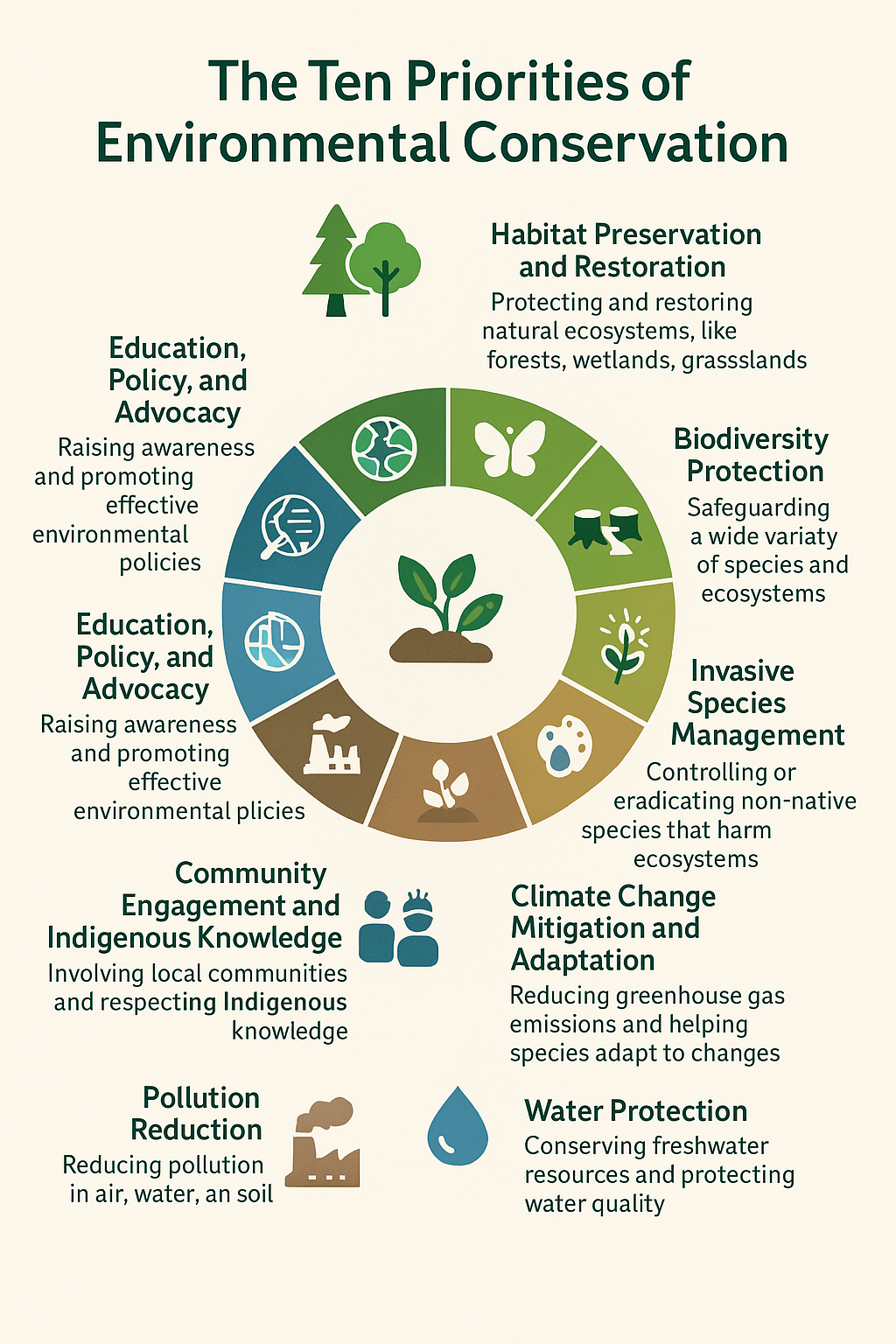🌱 1. Habitat Preservation & Restoration
- Protect what’s left: Safeguard forests, wetlands, grasslands, estuaries.
- Heal what’s damaged: Replant natives, re-flood drained wetlands, remove barriers.
🐾 2. Biodiversity Protection
- Maintain species richness as a measure of ecosystem health.
- Create protected areas, preserve migration corridors, and support recovery programs.
🌉 3. Connecting Fragmented Habitats
- Use wildlife corridors, overpasses, and smart land-use planning.
- Promote large, contiguous natural areas.
🌿 4. Invasive Species Control
- Prevent introductions.
- Early detection, rapid response, and long-term management.
🌍 5. Climate Change Mitigation & Adaptation
- Protect carbon sinks (forests, peatlands, seagrass beds).
- Help species adapt through climate-resilient planting and assisted migration.
💧 6. Water Protection
- Keep watersheds intact.
- Reduce nutrient runoff, restore natural flows, and protect aquifers.
🌾 7. Soil Health & Land Stewardship
- Encourage regenerative agriculture.
- Prevent erosion and desertification.
🚫 8. Pollution Reduction
- Minimize pesticides, plastics, and chemical runoff.
- Address light and noise pollution to protect wildlife behavior.
🧑🤝🧑 9. Community Engagement & Indigenous Knowledge
- Work with local communities and respect traditional ecological knowledge.
- Build stewardship through co-management and participatory projects.
📢 10. Education, Policy, & Advocacy
- Strengthen conservation laws and enforcement.
- Educate the public, inspire action, and secure funding.
